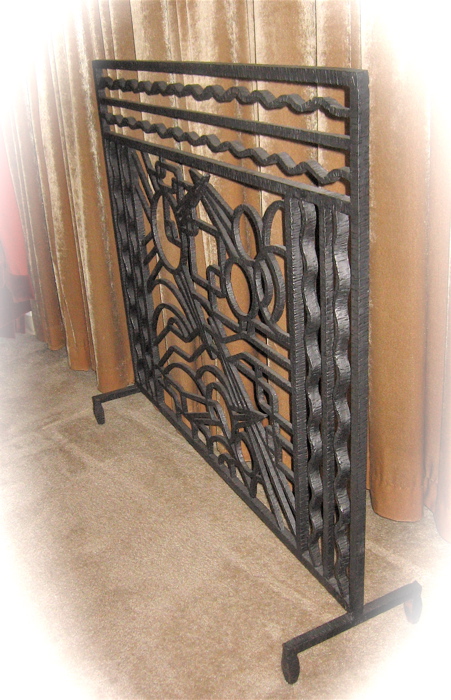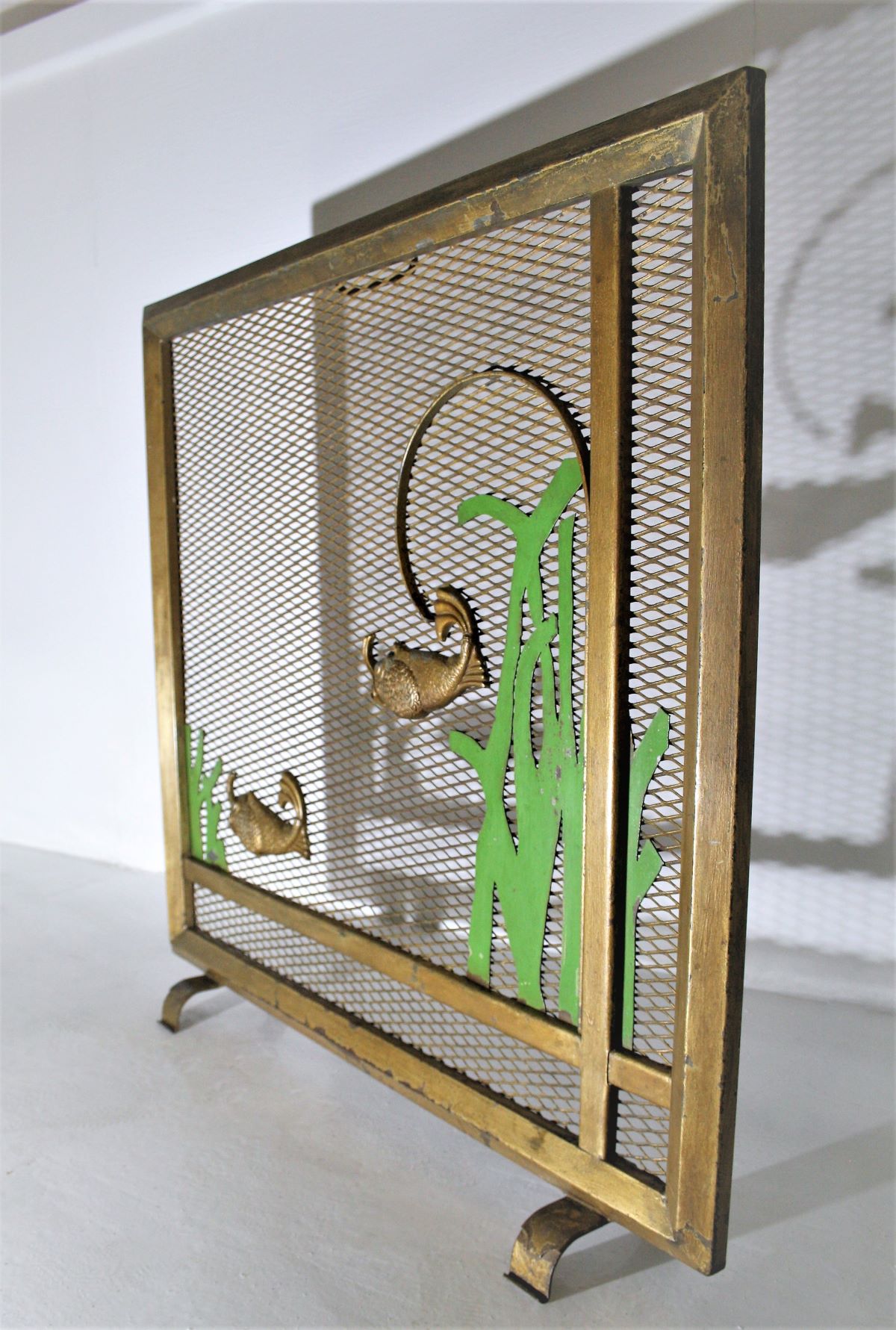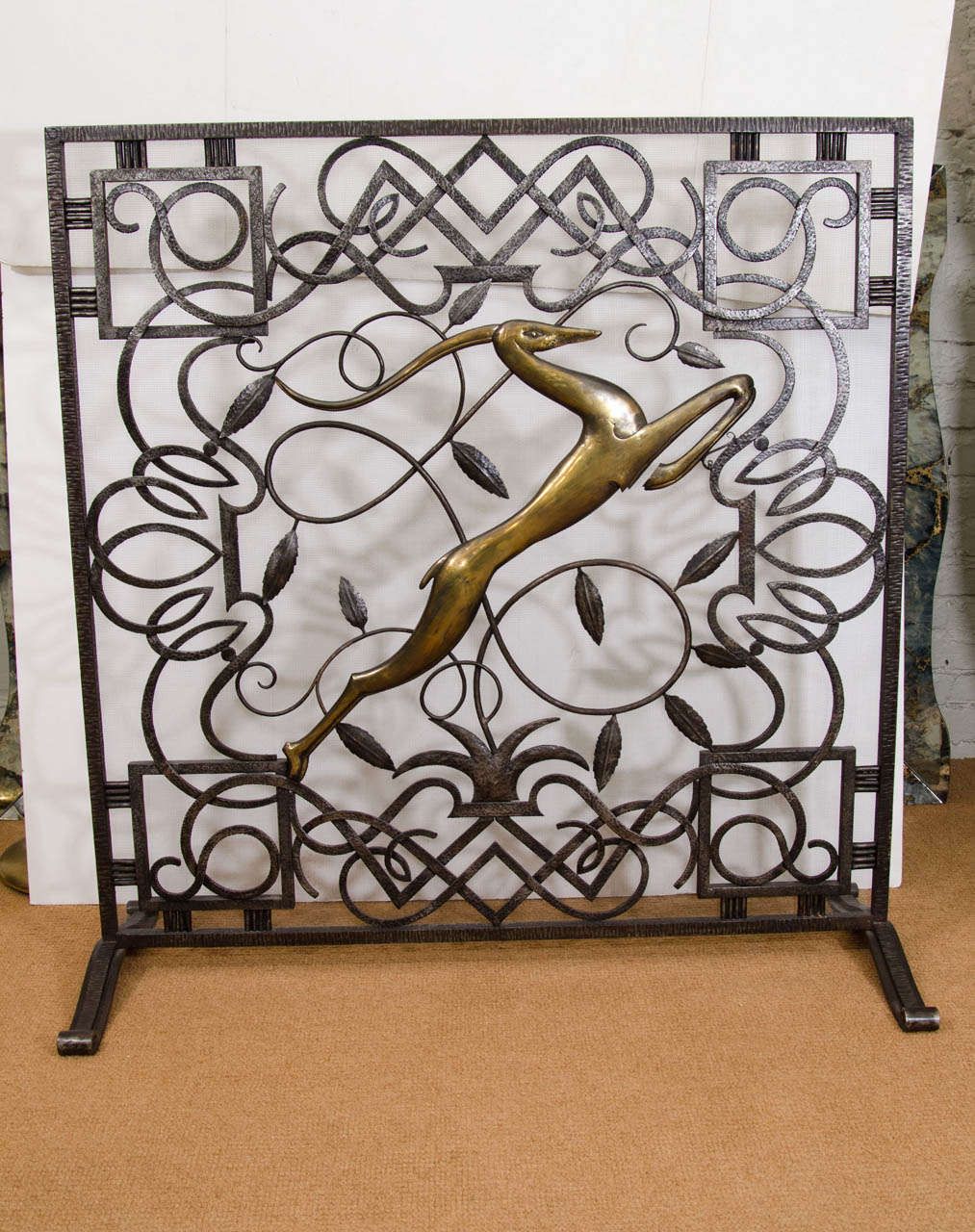Beauty and Functionality of an Art Deco Fireplace Screen
When it comes to combining style, sophistication, and functionality, an Art Deco fireplace screen stands as an exceptional choice. With its roots in the 1920s and 1930s, the Art Deco movement was known for its bold geometric patterns, rich colors, and lavish ornamentation. These elements are skillfully embodied in the design of fireplace screens from that era, making them not just practical additions to a home, but true works of art.

The Origins and Evolution of Art Deco
Art Deco, short for Arts Décoratifs, originated in France before spreading across the globe. It represented a departure from the flowing, natural forms of Art Nouveau, favoring instead clean lines, geometric shapes, and an emphasis on modernity. The movement emerged in the aftermath of World War I, reflecting the newfound optimism and forward-thinking mentality of the era.
The early 20th century was a time of rapid industrialization and technological advancements, which heavily influenced the Art Deco style. The use of materials like chrome, glass, and lacquer became popular, as did the incorporation of exotic woods, ivory, and even gold. This blend of modern and luxurious elements created a unique aesthetic that was both glamorous and functional.
As the Art Deco movement grew, it began to influence various aspects of design, including architecture, furniture, jewelry, and decorative arts. Fireplace screens, in particular, became a canvas for Art Deco designers to showcase their creativity. These screens were often made from metal, with intricate patterns that reflected the bold geometric motifs characteristic of the style.

Key Design Elements of an Art Deco Fireplace Screen
An Art Deco fireplace screen is more than just a protective barrier; it is a statement piece that adds character to any room. The design of these screens is characterized by a few distinct elements that make them instantly recognizable.
Geometric Patterns: One of the most defining features of Art Deco design is its emphasis on geometric shapes. From zigzags and chevrons to sunbursts and stepped forms, these patterns are a hallmark of the style. A fireplace screen might feature repeating patterns or a single, bold design that draws the eye.
Symmetry and Balance: Art Deco is all about symmetry and balance. Whether it’s a perfectly symmetrical screen with matching elements on either side or a balanced composition that draws the eye to a central focal point, these designs are meticulously planned and executed.
Luxurious Materials: The use of high-quality materials is another key aspect of Art Deco design. Metals like brass, chrome, and wrought iron are commonly used, often with a polished or brushed finish. Some screens also incorporate glass, mica, or mirrored elements, adding a touch of glamour and sophistication.
Ornamentation: While the overall design of an Art Deco fireplace screen is often clean and streamlined, there is still room for ornamentation. Decorative details such as scrolls, flourishes, or even small inlays of contrasting materials can be found, adding depth and interest to the piece.
Functional Elegance: Despite their decorative appeal, Art Deco fireplace screens are designed with functionality in mind. The screens are sturdy and durable, protecting from sparks and embers while also enhancing the visual appeal of the fireplace.
Color Palette: The color palette of Art Deco designs often includes rich, bold hues like deep reds, blues, and greens, along with metallics like gold, silver, and bronze. These colors are used to create contrast and highlight the intricate details of the design.

How to Choose the Perfect Art Deco Fireplace Screen
Selecting the right Art Deco fireplace screen involves more than just picking a design that catches your eye. Several factors should be considered to ensure that the screen not only complements your décor but also serves its intended purpose effectively.
Size and Proportions: The size of the fireplace screen is crucial. It should be large enough to cover the fireplace opening entirely, providing adequate protection from sparks and heat. However, it should not be so large that it overwhelms the fireplace or the room. Measuring the dimensions of your fireplace is the first step in choosing the right screen.
Design Compatibility: The design of the fireplace screen should harmonize with the overall style of your home. If you have a modern, minimalist interior, a screen with simple geometric patterns and a sleek finish might be the best choice. On the other hand, if your home has a more traditional or eclectic vibe, a screen with more ornate details could be a better fit.
Material Considerations: The material of the fireplace screen affects both its appearance and functionality. Metal screens are durable and heat-resistant, making them a practical choice. However, if you prefer a screen with a softer, more organic feel, you might opt for one with glass or mica panels. It’s also important to consider the finish of the material, as this can influence the overall look of the screen.
Ease of Use: While the aesthetic appeal of the fireplace screen is important, so is its usability. Look for a screen that is easy to move, clean, and maintain. Some screens have hinged panels that make them more flexible and easier to handle, while others are more rigid and may require more effort to adjust or clean.
Budget: Art Deco fireplace screens can vary widely in price, depending on factors like the materials used, the complexity of the design, and whether it is an antique or a reproduction. Set a budget before you start shopping to help narrow down your options. Remember, an Art Deco fireplace screen is an investment in both style and functionality, so it’s worth spending a little extra for a piece that you truly love.
Authenticity: If you are a collector or someone who values authenticity, you might want to consider whether you want an original Art Deco screen or a modern reproduction. Antique screens can add a sense of history and uniqueness to your home, but they may require more care and maintenance. Reproductions, on the other hand, can offer the same aesthetic appeal with the benefits of modern construction techniques.

Maintaining and Caring for Your Art Deco Fireplace Screen
Proper care and maintenance are essential to preserving the beauty and functionality of your Art Deco fireplace screen. With the right approach, you can ensure that your screen remains a striking feature in your home for years to come.
Regular Cleaning: Dust and soot can accumulate on the surface of the fireplace screen, dulling its appearance. Regular cleaning with a soft, dry cloth is the best way to keep your screen looking its best. For more stubborn dirt or grime, you can use a mild soap and water solution, but be sure to dry the screen thoroughly afterward to prevent rust or tarnish.
Avoiding Harsh Chemicals: While it may be tempting to use strong cleaning products to remove tough stains, these can damage the finish of your fireplace screen. Stick to gentle cleaners and avoid abrasive materials that could scratch the surface. For metal screens, a metal polish can be used occasionally to restore shine, but it should be used sparingly.
Preventing Rust and Corrosion: Metal fireplace screens are susceptible to rust and corrosion, especially if they are exposed to moisture. To prevent this, make sure the screen is completely dry after cleaning, and avoid placing it in areas with high humidity. If you notice any signs of rust, address them promptly by using a rust remover and applying a protective coating.
Handling with Care: Art Deco fireplace screens can be delicate, especially if they feature intricate designs or fragile materials like glass. Always handle your screen with care, avoiding rough treatment or placing heavy objects on it. When moving the screen, lift it rather than dragging it across the floor to prevent damage.
Storing Your Screen: If you need to store your fireplace screen for any reason, make sure to do so in a dry, cool place where it won’t be exposed to moisture or extreme temperatures. Cover the screen with a soft cloth or protective cover to prevent dust accumulation and scratches.
Professional Restoration: If your Art Deco fireplace screen is an antique or holds significant sentimental value, you may want to consider professional restoration. A skilled restorer can repair the damage, restore the original finish, and ensure that the screen retains its historical integrity. This can be especially important if your screen is a valuable or rare piece.

Incorporating an Art Deco Fireplace Screen into Your Home Décor
An Art Deco fireplace screen can be a stunning focal point in any room, but to truly make it shine, it should be integrated seamlessly into your home décor. Here are some tips on how to achieve this.
Complementary Accessories: Enhance the Art Deco theme by pairing your fireplace screen with other accessories that reflect the style. Think about adding geometric-patterned rugs, bold-colored throw pillows, or metallic accent pieces. These elements can create a cohesive look that ties the room together.
Balancing Modern and Vintage: Art Deco designs have a timeless appeal that can blend well with both modern and vintage décor. If your home has a contemporary aesthetic, your Art Deco fireplace screen can serve as a bold, contrasting element. On the other hand, if your space has a more vintage feel, the screen can enhance the overall ambiance, adding to the nostalgic charm.
Choosing the Right Room: While a fireplace screen can be used in any room with a fireplace, certain spaces may lend themselves better to the Art Deco style. Living rooms, with their focus on comfort and socializing, are ideal for showcasing a decorative screen. Bedrooms can also benefit from the added warmth and elegance that an Art Deco screen provides.
Lighting Considerations: The way you light your room can have a significant impact on how your Art Deco fireplace screen is perceived. Consider placing lamps or wall sconces near the fireplace to highlight the screen’s intricate details. Alternatively, you can use natural light to cast interesting shadows that enhance the geometric patterns of the screen.
Color Coordination: To make your fireplace screen stand out, consider the color scheme of the room. If your screen features bold colors or metallic finishes, you can complement these with neutral tones in the surrounding décor. Conversely, if the screen is more subdued, you can use vibrant colors in the room to draw attention to it.
Seasonal Decor Changes: An Art Deco fireplace screen can be a versatile piece that adapts to seasonal décor changes. During the winter months, you might emphasize its warmth and coziness with rich, warm colors and textures. In the summer, lighter, cooler tones can bring out the screen’s sleek, modern side.

Common Mistakes to Avoid When Choosing an Art Deco Fireplace Screen
Ignoring Room Proportions: One of the most common mistakes is selecting a fireplace screen that is too large or too small for the room. A screen that is too large can overpower the space, while one that is too small might look out of place. Always consider the proportions of the room and the fireplace before making a purchase.
Overlooking Functionality: While the design of an Art Deco fireplace screen is important, it’s crucial not to overlook its functionality. A screen that is difficult to move, clean, or maintain can become more of a hassle than an asset. Make sure that the screen you choose is not only beautiful but also practical for everyday use.
Not Matching the Home’s Style: An Art Deco fireplace screen can be a striking addition to any room, but it must complement the overall style of your home. A screen that clashes with your décor can disrupt the harmony of the space, so take the time to consider how the screen will fit in with your existing furniture and accessories.
Neglecting Material Quality: The materials used in the construction of your fireplace screen will affect its durability and appearance. Opting for a cheaper, lower-quality material may save you money upfront, but it could lead to issues like rust, tarnish, or even structural damage over time. Invest in a screen made from high-quality materials to ensure it lasts.
Forgetting About Maintenance: An Art Deco fireplace screen, especially one made from metal, requires regular maintenance to keep it looking its best. Failing to clean and care for your screen can result in a dull, tarnished appearance. Establish a regular cleaning routine to preserve the screen’s beauty and functionality.
Underestimating the Impact of Lighting: Lighting plays a crucial role in how your fireplace screen is perceived. Without proper lighting, the intricate details of an Art Deco screen may go unnoticed. Consider the placement of lights in your room and how they interact with the screen to ensure that it’s showcased to its full potential.

What is an Art Deco fireplace screen, and how is it different from other styles?
An Art Deco fireplace screen is a decorative and functional barrier placed in front of a fireplace. It is distinguished by its geometric patterns, symmetrical designs, and use of luxurious materials like brass, chrome, and glass. Unlike other styles that may focus on intricate carvings or rustic materials, Art Deco screens emphasize bold, clean lines and a modern aesthetic that reflects the glamour and optimism of the 1920s and 1930s.
How do I clean and maintain my Art Deco fireplace screen?
Regular cleaning is essential to maintain the appearance of your Art Deco fireplace screen. Dust it regularly with a soft, dry cloth to remove surface dirt. For tougher grime, use a mild soap and water solution, ensuring you dry the screen thoroughly afterward to prevent rust. Avoid harsh chemicals that can damage the finish. For metal screens, the occasional use of a metal polish can restore shine. Handle the screen carefully to avoid damage, and store it in a dry, cool place if not in use.
Can I use an Art Deco fireplace screen in a modern home?
Yes, an Art Deco fireplace screen can complement a modern home beautifully. The clean lines and geometric patterns of Art Deco designs can create a striking contrast with contemporary interiors. The key is to ensure that the screen harmonizes with the overall décor. Pairing it with modern furniture and accessories that echo the screen’s materials and colors can create a cohesive, sophisticated look.

Are antique Art Deco fireplace screens better than reproductions?
The choice between an antique and a reproduction Art Deco fireplace screen depends on your preferences. Antique screens offer historical authenticity and a unique character that can’t be replicated. However, they may require more maintenance and care. Reproductions, on the other hand, can offer the same aesthetic appeal with the benefits of modern materials and construction techniques, often at a lower cost. If authenticity and history are important to you, an antique may be worth the investment; otherwise, a well-made reproduction can be a great option.
What should I consider when buying an Art Deco fireplace screen?
When buying an Art Deco fireplace screen, consider the size and proportions of your fireplace and room, the design compatibility with your existing décor, the quality and durability of the materials, and the ease of use and maintenance. Setting a budget and deciding whether you want an original antique or a reproduction can also help narrow down your choices. Ensure that the screen you choose not only adds visual appeal but also effectively protects against sparks and heat.
How can I incorporate an Art Deco fireplace screen into my home décor?
To incorporate an Art Deco fireplace screen into your home décor, start by considering complementary accessories like geometric-patterned rugs, metallic accents, or bold-colored pillows that echo the screen’s design. Balance the screen with modern or vintage elements depending on your home’s style. Lighting is also crucial—use lamps or natural light to highlight the screen’s details. Finally, coordinate the room’s color scheme to either draw attention to the screen or blend it seamlessly into the overall décor.

Related Posts: